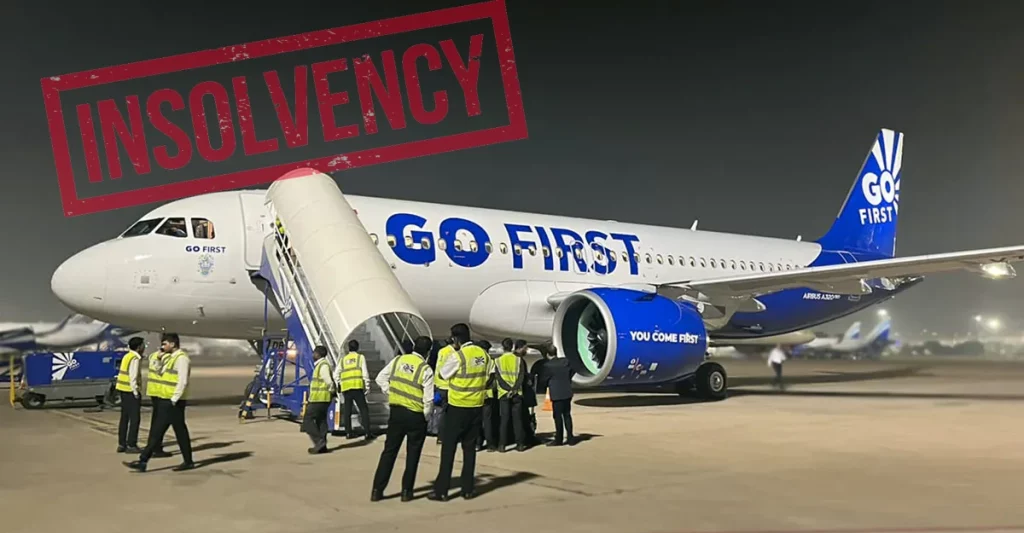When it comes to the oldest private airline of Indian origin, one name used to shine on the top i.e. Go First. Most of you might have witnessed its lifetime from commencing operations in November 2005 to ceasing operations in May 2023 (last year).

The cease of operations wasn’t due to any lockdown, merger, or acquisition. It was due to bankruptcy… Last year it filed for insolvency with the National Company Law Tribunal (NCLT).
What a sad story…
When this rough patch of Go First will end? Did it take any steps to tackle the situation? If your mind is flooding with such queries, then you have come to the right place.
In this write-up, we will see if Go First has any future ahead of its bankruptcy and what are the possible solutions to solve this crisis.
Stay tuned!
(A) Go First Bankruptcy: A Quick Recap
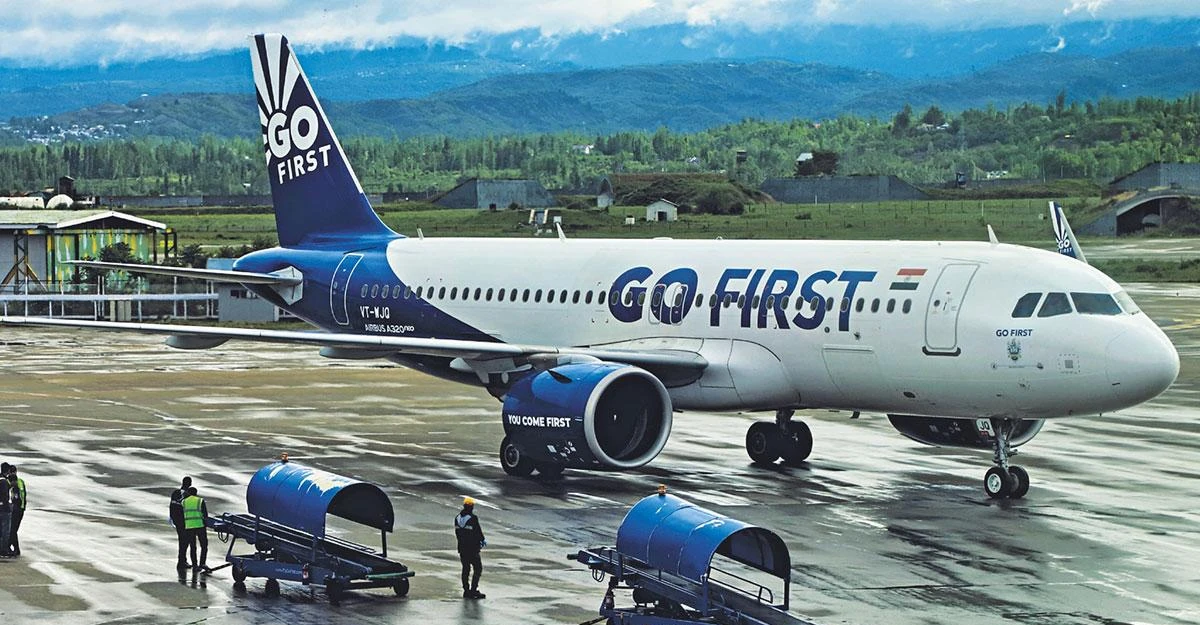
So, you know Go First, the airline formerly known as GoAir? As you know, they already hit a financial storm and declared bankruptcy in May 2023. It’s like they flew straight into a tornado of problems – COVID-19 chaos, crazy fuel prices, and engine troubles.
All these factors put Go First in a tight spot!
Let’s analyze the market share. Go First had a solid 9% grip on the domestic market. But poof, they’re gone, leaving other airlines in a race to fill the gap.
Guess what that means? Yup, higher fares for us regular folks!
Let’s dive into the causes of Go First Bankruptcy. First, the Covid-19 pandemic swoops in, and Go First takes a hit. Passenger numbers drop, and the airline has to park planes and lay off staff. But wait, there’s more! Fuel prices decide to join the crisis, squeezing Go First’s budget even tighter. And the engines? Alas, they decide to misbehave, causing flight chaos and a serious hit to the airline’s financial savings.
With over 7,000 staff left hanging, the bankruptcy isn’t just a sad ending for them. It’s a sign that airfares might become the villains in this story – higher and less budget-friendly.
But hold up, here comes the government to the rescue! Financial support could be their superhero move, saving not only Go First but other struggling airlines too. Tax breaks could be the sidekick, helping airlines dodge financial bullets.
And here’s the unexpected twist – the government could step in and streamline regulations. Is this possible? Will the government and other official entities offer a better future to Go First?
Just go through the next section and you will find out!
(B) Engine Troubles & Financial Woes: What Went Wrong with Go First?
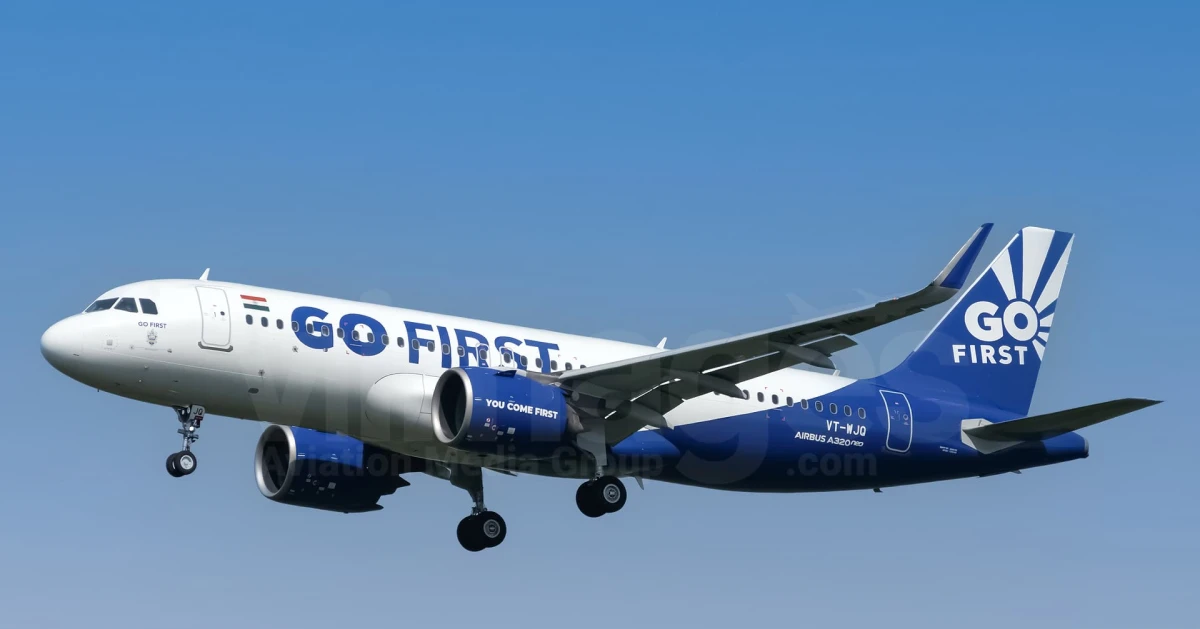
Aren’t we here to see what holds ahead for bankrupted Go First and to determine the possible solutions? Yes, we are!
But look, first we need to see what is the root cause of Go First’s failure. Only then we can present appropriate solutions and determine the future of Go First Airline.
Hey, don’t worry, it’s not gonna be a series of general challenges that we have already discussed in the synopsis. Here we will see what exactly went wrong with Go First.
Let’s begin!
(B.1) Go First’s Side of the Story
Go First pointed fingers at engine troubles, not financial mismanagement, for its bankruptcy. In its bankruptcy filings, the company emphasized that it had diligently met all debt repayment deadlines. The primary culprit, according to Go First, was the US engine manufacturer Pratt & Whitney.
The airline claimed it had to ground a significant portion of its Airbus A320neo fleet due to an increasing number of failing engines from Pratt & Whitney. This, in turn, triggered a severe cash flow problem.
(B.2) Fleet Grounded & Revenue Loss
Go First had to ground 25 aircraft, roughly half of its Airbus A320neo planes, resulting in a staggering 108 billion rupees ($1.3 billion) in lost revenue and expenses. According to aviation analytics firm Cirium, the airline was scheduled to operate 6,225 flights in May, with over 1.1 million seats affected.
(B.3) Pratt & Whitney’s Response
Go First accused Pratt & Whitney of non-compliance with an emergency arbitrator’s order, which included delivering “at least 10 serviceable spare leased engines by 27 April 2023.” Pratt & Whitney, in response, asserted compliance with the March 2023 arbitration ruling and refrained from further comment, citing ongoing litigation.
(B.4) Significant Dependence on Pratt & Whitney Engines
Approximately 90% of Go First’s fleet comprised A320neos equipped with Pratt & Whitney engines. Since 2020, grounded planes due to spare part unavailability and delayed supply of retrofitted engines disrupted flight schedules, leading to frequent cancellations.
(B.5) Deterioration in Financial Performance
Despite being the fifth-largest airline in India by scheduled departures, Go First faced a financial downturn. Serial engine failures since 2020 and the pandemic-induced slump in air travel contributed to the airline’s financial woes. Some leased planes were repossessed due to non-payment, and daily payments for fuel became increasingly challenging.
(B.6) Wadia Group’s Investments and Government Assistance
Despite substantial investments from the Wadia Group (32 billion rupees in three years) and emergency credit from the government, Go First struggled to maintain operations.
(B.7) Industry Competition and Market Shifts
Go First’s collapse highlighted the intense competition in India’s airline sector, which had witnessed a robust recovery post-pandemic. Rivals like IndiGo, Air India, SpiceJet, and newcomers like Akasa Air stood to gain market share.
(B.8) Customer Fallout
While competitors benefited, customers faced the brunt of the situation. Fares on Go First’s routes experienced a sharp spike of 50-60% in the months following the airline’s crisis.
Note: We have thoroughly explained the topic “Why flight ticket prices are getting expensive in India?” Go through the article for detailed information and you will get to know why you are paying hefty prices for flight tickets.
In essence, Go First’s narrative of engine troubles, financial challenges, and market repercussions painted a comprehensive picture of the complexities leading to the airline’s recent bankruptcy.
(C) What are the possible solutions for Go First amid Bankruptcy?
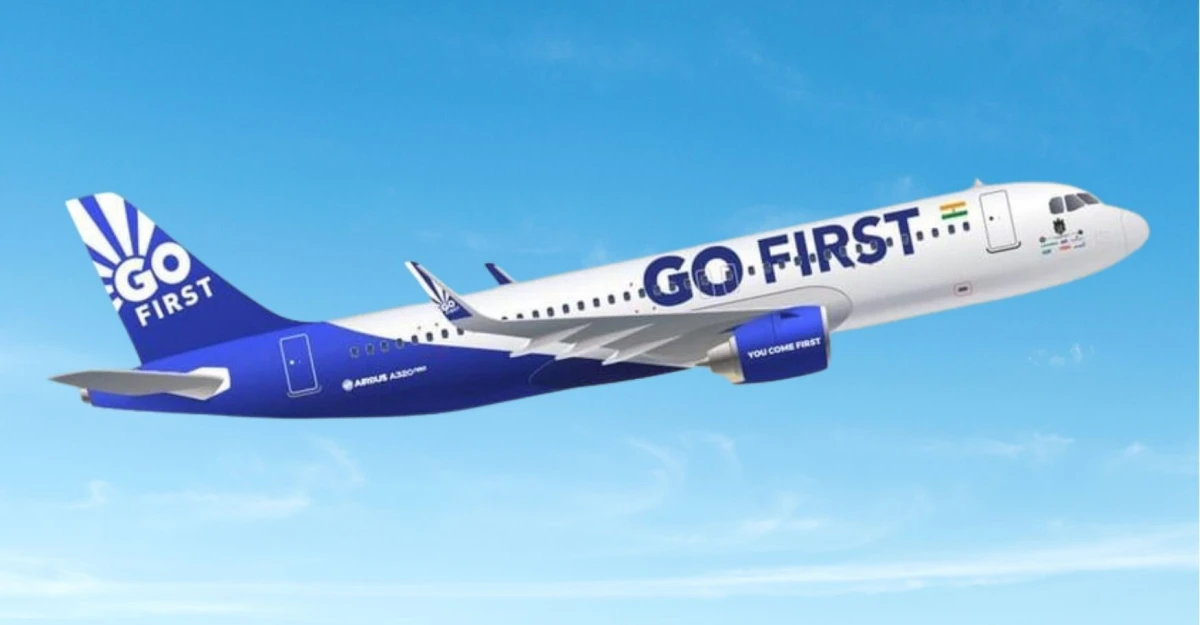
Here comes the core part of this write-up that you have been looking for! What holds ahead for bankrupted Go First? Well, there are a series of solutions that Go First can use to tackle the crisis-
(C.1) Engine Maintenance & Replacement
Let’s address the issue of engines and how the engines can act as a key to unlock the positive potential of the Go First airline.
Collaborate with Pratt & Whitney to Address Engine Issues Promptly
Given that Go First attributes a significant portion of its financial struggles to engine problems, a collaborative effort with Pratt & Whitney becomes crucial. This involves open communication to resolve existing issues and prevent future engine failures. Collaborative initiatives might include joint inspections, maintenance protocols, and swift responses to emerging concerns.
Ensure Timely Supply of “Serviceable Spare Engines”
To minimize disruptions caused by grounded aircraft, Go First needs to ensure a timely supply of serviceable spare engines. This involves holding Pratt & Whitney accountable for complying with previously agreed-upon orders, such as delivering a specified number of spare engines within a set timeframe. This step is critical to maintaining a reliable and functional fleet.
(C.2) Financial Restructuring
Here, we will see how the financial management and restructuring can help Go First-
Seek Financial Assistance or Investment to Stabilize Operations
Go First should actively seek financial assistance or investment to stabilize its operations. This could involve engaging with potential investors, financial institutions, or even the government to secure the necessary funding. Collaborative efforts with stakeholders willing to inject capital can help alleviate the immediate financial strain.
Explore Debt Restructuring or Refinancing Options
Exploring debt restructuring or refinancing options becomes imperative to manage existing financial obligations. Negotiations with creditors, financial institutions, or restructuring experts can pave the way for a more sustainable debt repayment plan, easing the burden on the airline’s financial health.
(C.3) Operational Efficiency
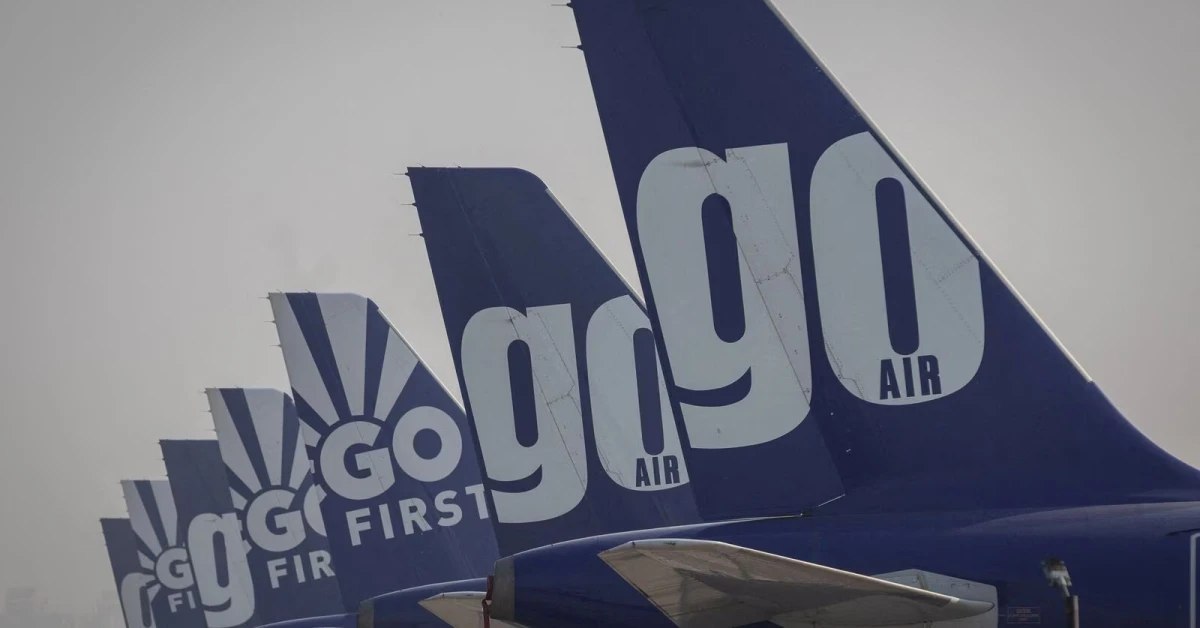
As you know the operations or working strategy hold a key importance for the functioning of Go First. So, let’s see how it can increase its operational efficiency-
Optimize Fleet Utilization by Managing Available Aircraft Effectively
With a portion of Go First’s fleet grounded, optimizing the utilization of available aircraft becomes key. Efficiently managing the operational capabilities of the active fleet can contribute to cost reduction and revenue maximization. This may involve strategic scheduling, route planning, and resource allocation.
Streamline Routes and Schedules to Maximize Revenue
To enhance operational efficiency, Go First should consider streamlining its routes and schedules. Focusing on high-demand routes and peak travel times can contribute to maximizing revenue. By aligning services with market demand, the airline can ensure better utilization of resources.
(C.4) Customer Confidence
Rebuilding customer relationships and their confidence is the most difficult yet not impossible thing to do for a bankrupt entity. Here is what Go First can do to win the hearts of their customers again-
Communicate Transparently with Passengers about Refunds and Future Plans
Restoring customer confidence requires transparent communication. Go First should keep passengers informed about refund processes, plans, and any changes in operations. Providing clear and consistent updates fosters trust and demonstrates a commitment to customer satisfaction.
Rebuild Trust by Ensuring Reliable Services Once Operations Resume
As operations resume, Go First must prioritize delivering reliable services. This includes minimizing flight disruptions, adhering to schedules, and ensuring a positive customer experience. Rebuilding trust is an ongoing process, and consistent, reliable service is a key factor in regaining customer confidence.
(C.5) Government’s Support & Intervention
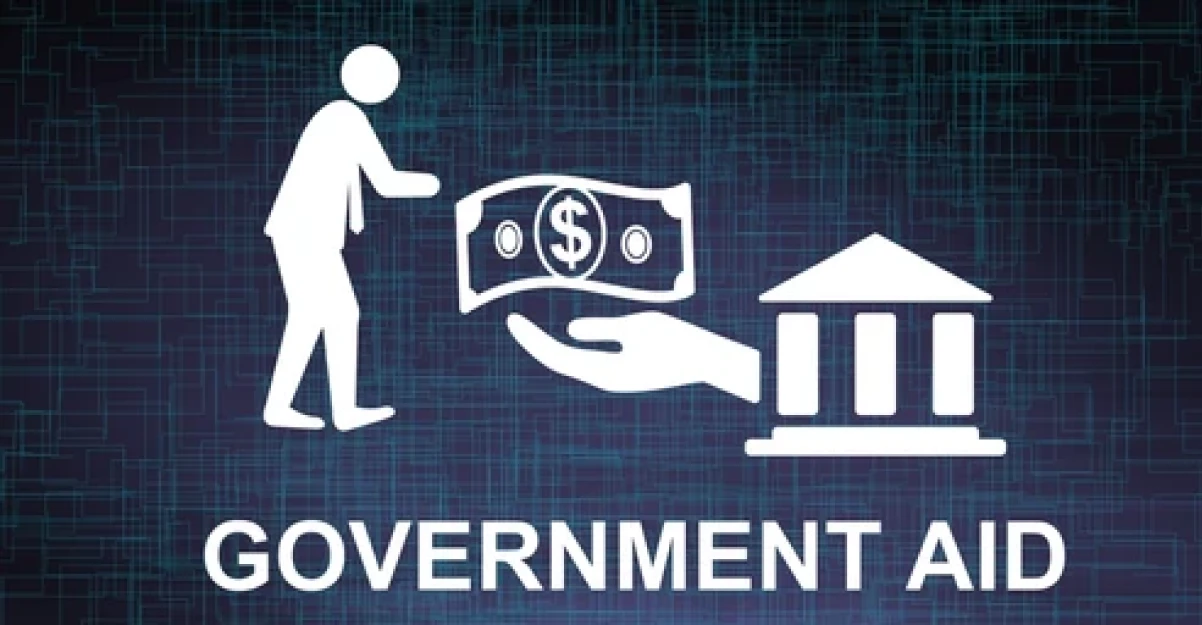
In the aftermath of Go First’s bankruptcy, government support becomes a pivotal factor in facilitating the airline’s recovery. Various avenues of assistance and intervention can contribute to stabilizing the aviation sector and ensuring the well-being of both the airline and its employees.
Financial Aid Packages
The government can consider providing targeted financial aid packages to Go First. These funds can be allocated to address immediate financial challenges, such as settling outstanding debts, covering operational costs, and facilitating a phased recovery.
Industry-Specific Bailouts
Recognizing the broader implications of Go First’s collapse on the aviation industry, the government may contemplate industry-specific bailouts. These could involve financial injections designed to support not only Go First but also other struggling airlines facing similar challenges.
Policy Support and Regulatory Measures
Implementing policy measures and regulatory adjustments can alleviate operational burdens on Go First. This may include temporary relief from certain taxes, fees, or regulatory requirements, allowing the airline some breathing room during the recovery phase.
Infrastructure Investments
The government can channel investments into aviation infrastructure, indirectly benefiting Go First and the industry at large. Upgrading airports, air traffic management systems and related facilities enhances overall efficiency and contributes to the long-term sustainability of airlines.
Employment Support Programs
Recognizing the impact on the workforce, the government can introduce employment support programs. These initiatives may include skill development programs, job placement assistance, or temporary financial aid for employees affected by Go First’s bankruptcy.
Collaborative Initiatives with Stakeholders
Engaging in collaborative initiatives with stakeholders, such as industry associations and financial institutions, can amplify the impact of government support. This collective approach ensures a coordinated effort to revive Go First and stabilize the aviation sector.
Long-Term Policy Framework
Establishing a comprehensive and forward-looking policy framework for the aviation industry is crucial. This framework should address systemic issues, promote competitiveness, and provide a stable environment for airlines to thrive, preventing similar crises in the future.
All these stuff form a comprehensive strategy for navigating the challenging aftermath of Go First’s bankruptcy.
(D) Wrap-Up: What Holds Ahead For Bankrupt Go First?
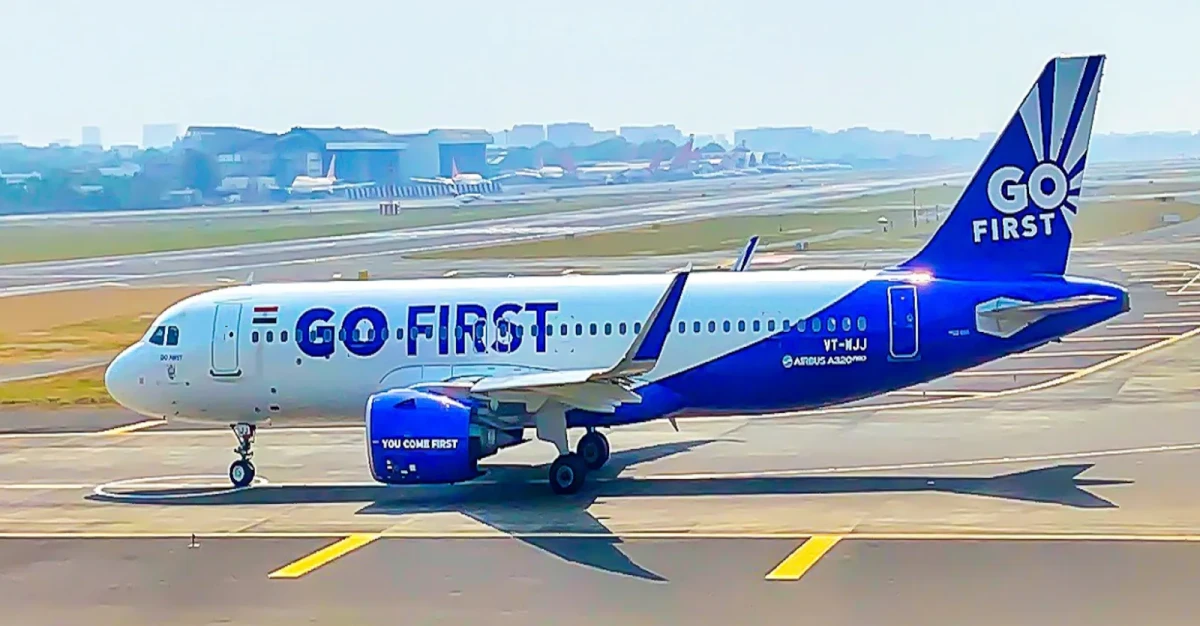
Here we come to the final part of this write-up on Go First! In a nutshell, the future for bankrupt Go First hinges on a strategic blend of collaborative efforts, financial restructuring, operational efficiency, and unwavering government support.
Addressing engine issues, securing financial stability, optimizing operations, and rebuilding customer trust stand as crucial stepping stones. With concerted actions and a resilient approach, Go First has the potential to rise from its challenges, resume reliable services, and contribute to India’s aviation landscape.
The journey ahead calls for a unified commitment from stakeholders, emphasizing transparency, innovation, and a steadfast focus on customer satisfaction to chart a path toward sustained success.
Only time will tell whether Go First will resurge again or not… By the way, what do you think about the future of Go First? Hey, don’t hesitate to share your thoughts below in the comment section. In case, we receive any updates on Go First, we will update you soon!

